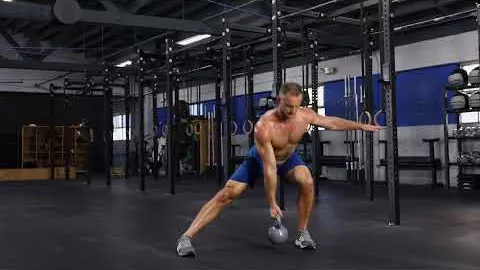
With the ever-increasing interest in fitness and strength training, unconventional exercises like the one arm kettlebell lateral lunge are gaining popularity. This exercise targets multiple muscle groups, including the glutes, hamstrings, quads, and core, making it an effective and efficient option for overall lower body development. In this article, we will provide a detailed guide on how to properly perform the one arm kettlebell lateral lunge exercise, its benefits, variations, and safety tips.
The one arm kettlebell lateral lunge exercise is a compound movement that combines elements of lunges and kettlebell training. As the name suggests, this exercise involves performing a lateral lunge while holding a kettlebell in one hand. It adds an extra challenge to the regular lateral lunge by incorporating the weight resistance from the kettlebell. This exercise targets the muscles used during lunges, while also incorporating the stabilization required when holding the kettlebell with one arm.
To perform the one arm kettlebell lateral lunge exercise, follow these step-by-step instructions:
Once you have mastered the basic one arm kettlebell lateral lunge exercise, you can try these variations to further challenge yourself:
While the one arm kettlebell lateral lunge exercise offers numerous benefits, it is essential to prioritize safety during the workout. Here are some safety tips to keep in mind:
The one arm kettlebell lateral lunge exercise is a highly effective compound movement that targets multiple muscle groups simultaneously. Incorporating this exercise into your lower body training routine can enhance strength, stability, and overall functional fitness. Remember to follow the proper form and safety guidelines to maximize the benefits while minimizing any potential risks. So grab a kettlebell, step to the side, and lunge your way to a stronger lower body with the one arm kettlebell lateral lunge exercise!
If you're looking for a gym, fitness club or yoga studio, you've come to the right place.
You can find information about gyms in your area. Browse catalog of gyms and find gyms with classes which are you looking for.
On gym page you can find simple information like address, phone or website. You can find list of available classes. You can check availability of personal training or small group classes. On place page you can also see information about open hours.
You can find gyms near you with amenities, courts, studios and equipments.
Use our map to find gym at your city or district.
In Gym Navigator you can find list of exercises with movies for many body parts.
You can browse exercises catalog and find exercises the best of you.
You can also find exercises grouped into workout plans, which you can use to improve you body. Each routine show you exercises one by one and give you possibility to count you progress and count down rest time.